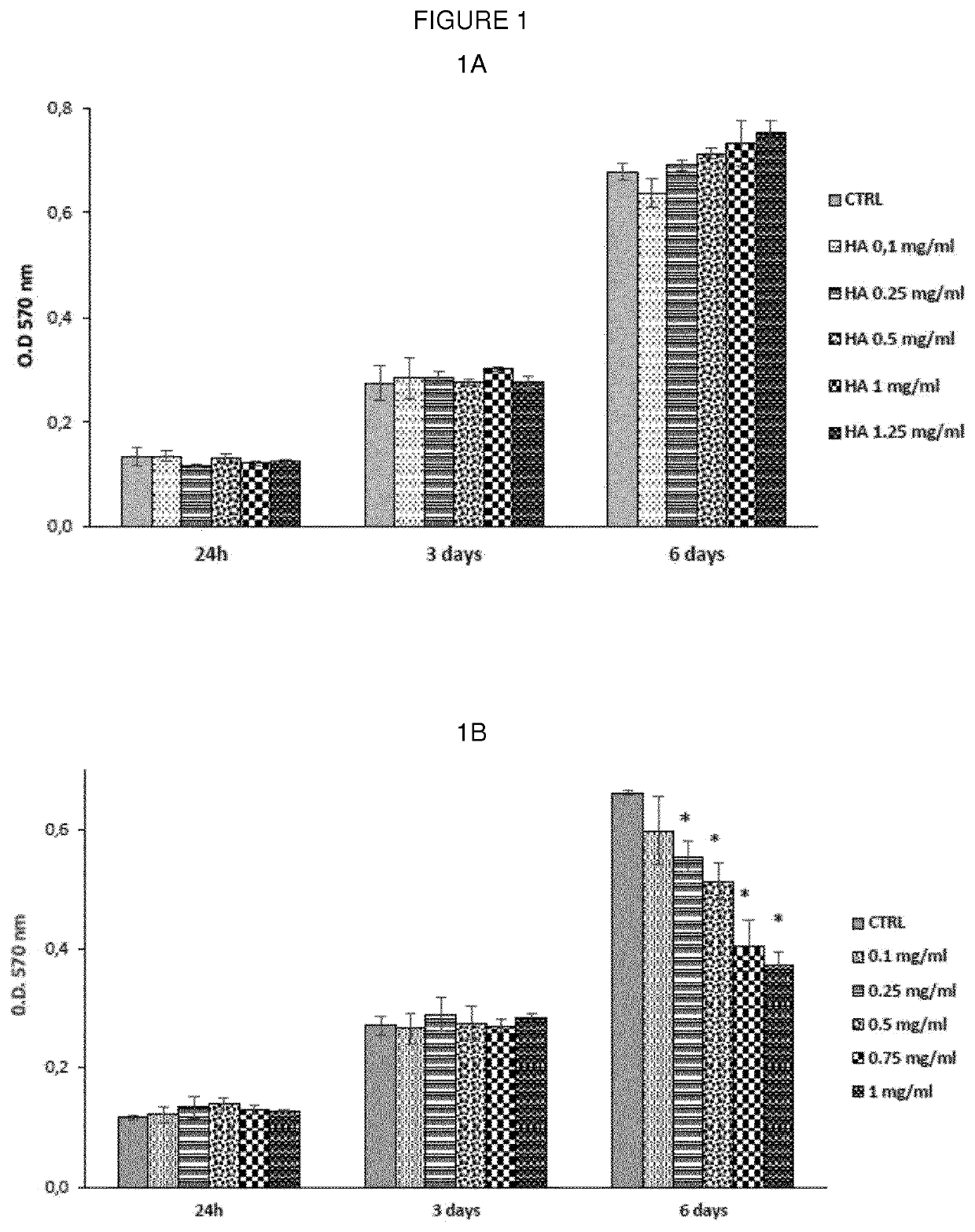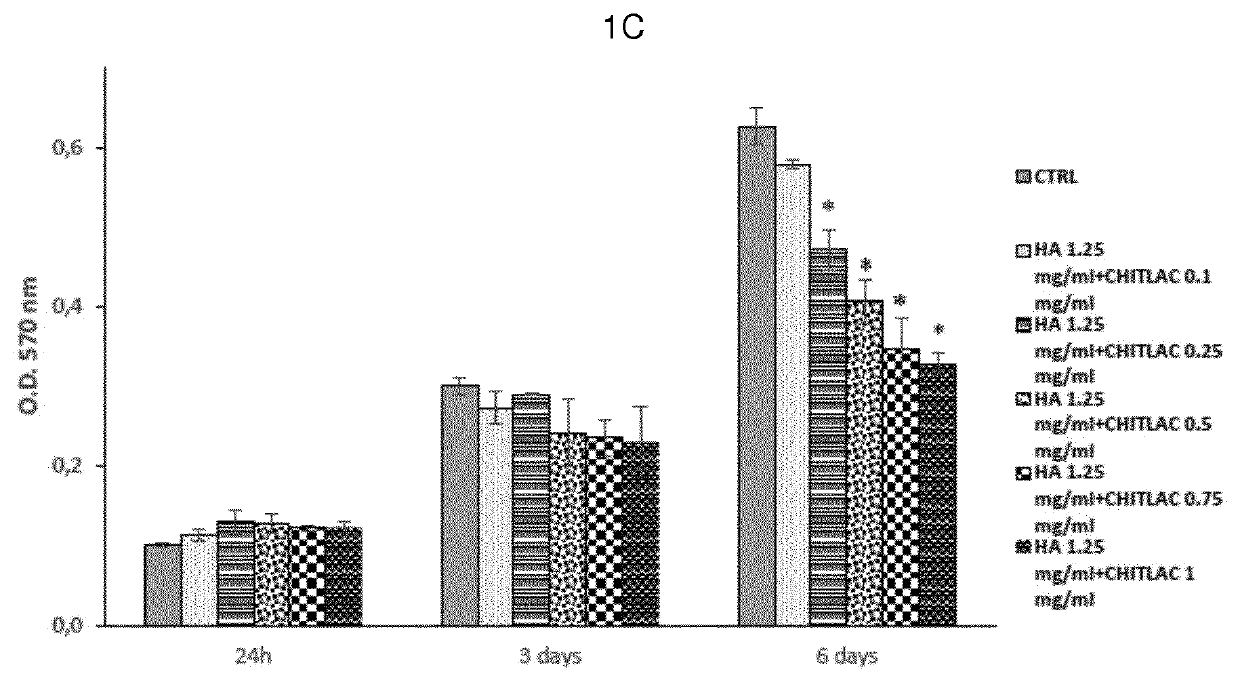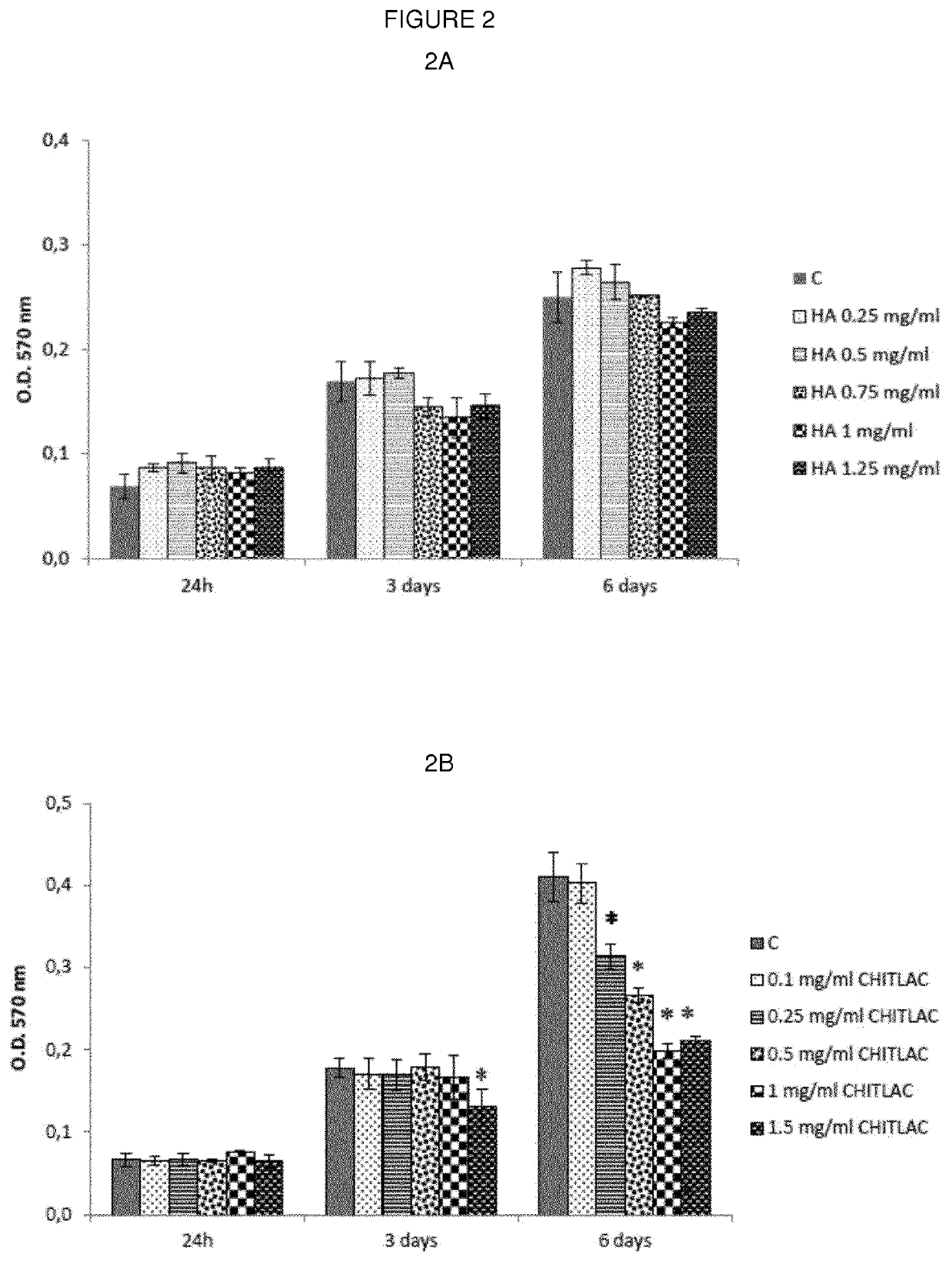Polysaccharide compositions for tissue repair
a polysaccharide and tissue technology, applied in the field of polysaccharide compositions, can solve the problems of low solubility in water and coacerbation with phase separation
- Summary
- Abstract
- Description
- Claims
- Application Information
AI Technical Summary
Benefits of technology
Problems solved by technology
Method used
Image
Examples
example 1
Assay on the Proliferation of Human Dermic Fibroblasts
[0055]Human fibroblasts were isolated from skin samples of healthy donor (57-62 years) undergoing plastic surgery.
[0056]In short, the skin was placed for 1 hour in sterile PBS with 3% penicillin and streptomycin, in order to break down the bacterial charge. Subsequently, the samples were cut into small pieces and placed in a dispase II solution (2.5 mg / ml HBSS, Hank's balanced salt solution) for 4 hours at 37° C., to obtain detachment of the epithelial from the underlying dermis. The dermis fragments were digested with collagenase I (80 U / ml in HBSS) for 12 hours in a 37° C. incubator, 5% pCO2. Digestion was blocked with Dulbecco's Modified Eagle's Medium (DMEM) containing 10% fetal calf serum (FCS), 4 mM glutamine, 100 IU / ml penicillin / streptavidin and the suspension was filtered and centrifuged at 1200 rpm. The fibroblasts present in the pellets were resuspended in complete DMEM medium and seeded on sterile culture plates in in...
example 2
Assay on Proliferation of Articular Cartilage Chondrocytes
[0064]Human chondrocytes have been isolated from a cartilage biopsy taken from patients undergoing surgery to replace the knee cartilage.
[0065]The biopsy was finely cut and then transferred to a 0.25% trypsin solution for 15 minutes at 37° C. At the end, the cartilage was transferred to a I 300 U / ml collagenase solution for 12 hours in a 37° C. incubator, 5% pCO2. After filtration, the solution was centrifuged at 1200 rpm and the pellet cells re-suspended in Dulbecco's Modified Eagle's Medium (DMEM) completed with 10% fetal calf serum (FCS), 4 mM glutamine, 100 IU / ml penicillin / streptavidin, in presence of 50 mg / ml of ascorbic acid. The cells were kept in culture by changing the medium every two days. At confluence, the cells were detached from the bottom of the culture plate with a 0.05% trypsin solution and 0.02% EDTA, divided by 1:3 and used for experiments from the second to the third step.
[0066]The chondrocytes were seed...
example 3
Essay on Proliferation of Sinoviocytes From Human Synovia
[0073]Human synoviocytes were obtained from synovias of patients undergoing surgery to repair ligaments.
[0074]Cells were extracted by treatment with a first collagenase I solution of 40U / ml for 12 hours in a 37° C. in incubator with a 5% CO2 and 90% humidity percentage. The enzymatic action was blocked by adding the complete DMEM medium, the filtered and the 1200 rpm centrifuged solution. The pellet cells were re-suspended in DMEM, 10% fetal calf serum, 4 mM glutamine, 100 IU / ml penicillin / streptavidin and seeded on sterile culture plates in incubator at 37° C., with 5% CO2 and relative humidity of 90%. The cell phenotype was confirmed by morphological analysis with optical microscopy and by immunocytochemical analysis for prolyl-4-hydroxylase. The medium was changed every two days and confluent cultures were detached with a 0.05% trypsin solution and 0.02% EDTA and passed into new plates by dividing them 1:3. For the experime...
PUM
| Property | Measurement | Unit |
|---|---|---|
| average molecular weight | aaaaa | aaaaa |
| average molecular weight | aaaaa | aaaaa |
| average molecular weight | aaaaa | aaaaa |
Abstract
Description
Claims
Application Information
 Login to View More
Login to View More - R&D
- Intellectual Property
- Life Sciences
- Materials
- Tech Scout
- Unparalleled Data Quality
- Higher Quality Content
- 60% Fewer Hallucinations
Browse by: Latest US Patents, China's latest patents, Technical Efficacy Thesaurus, Application Domain, Technology Topic, Popular Technical Reports.
© 2025 PatSnap. All rights reserved.Legal|Privacy policy|Modern Slavery Act Transparency Statement|Sitemap|About US| Contact US: help@patsnap.com



